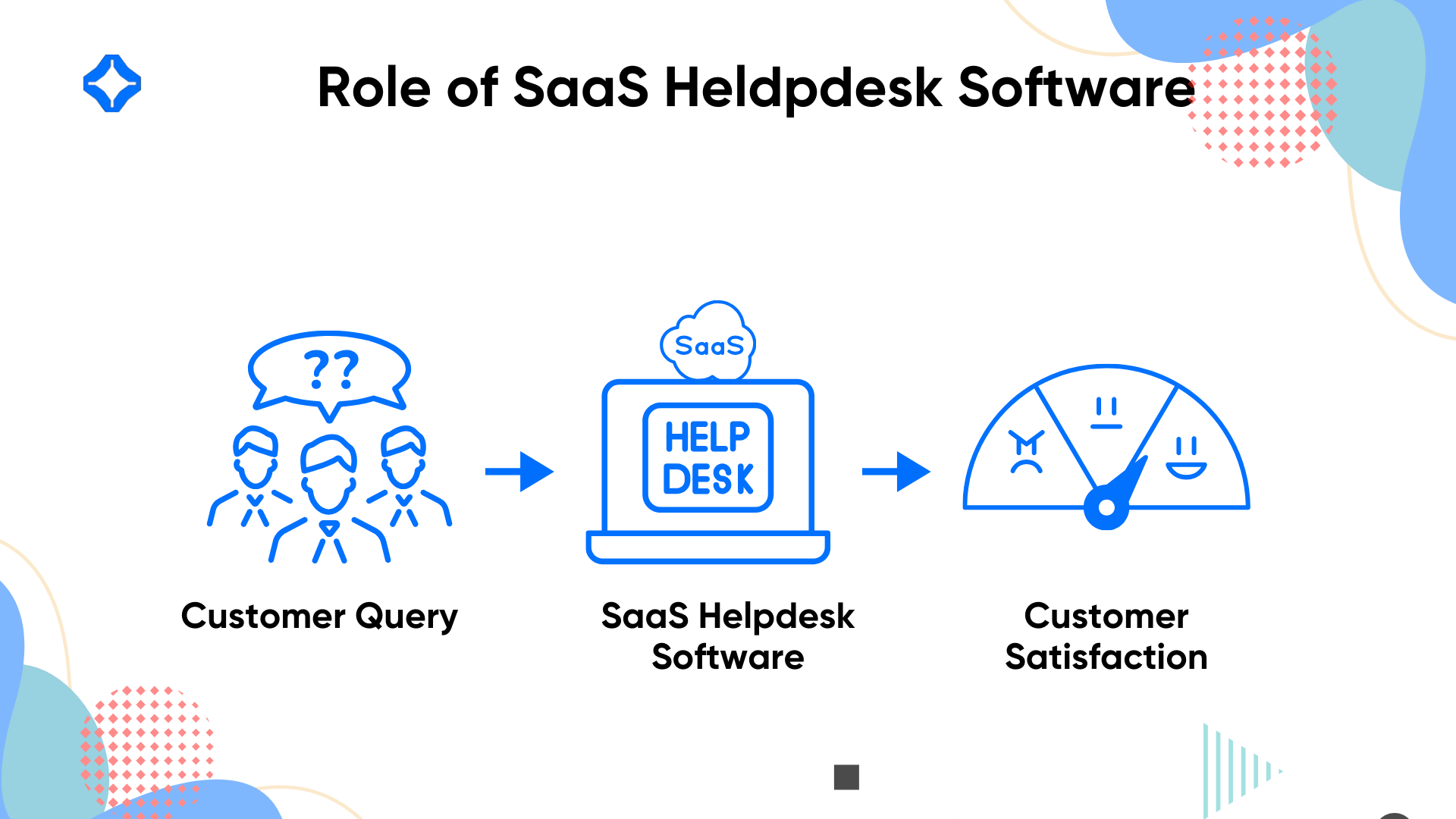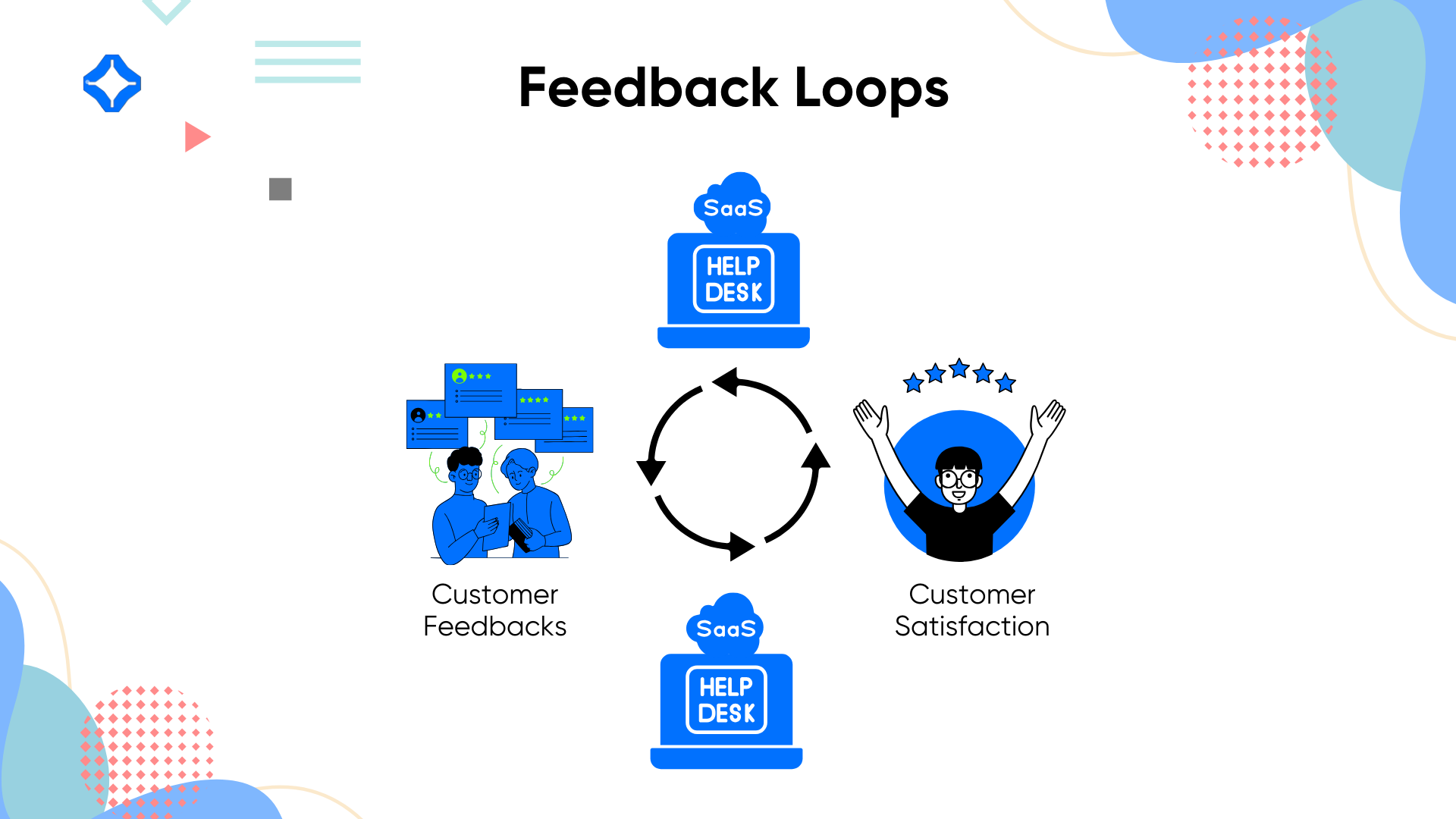In today’s competitive market, customer satisfaction is vital for business success. SaaS helpdesk software provides an efficient solution to increase support processes and resolve customer concerns effectively.
Centralizing communication, automating repetitive tasks, and offering actionable insights, these tools enable businesses to deliver personalized and timely assistance. This article explores how SaaS helpdesk platforms can transform customer support strategies, leading to improved satisfaction and stronger customer relationships.
The Role of SaaS Helpdesk Software in Enhancing Customer Support

Helpdesk software is key in transforming customer support by centralizing operations into a single, user-friendly platform. These systems enable teams to handle high volumes of inquiries while maintaining quality and efficiency.
Features like real-time ticket tracking, automated workflows, multi-channel support, and helpdesk tools ensure that customers receive timely and accurate assistance. This centralized approach resolves issues faster and fosters stronger customer relationships.
SaaS helpdesk software also facilitates better team collaboration. Features like internal notes, ticket-sharing, and task delegation enable agents to work together seamlessly, reducing resolution times and ensuring a consistent customer experience.
Key Features of SaaS Helpdesk Software
Ticket Management
SaaS platforms streamline ticket management by automating the assignment and categorization of customer inquiries. Prioritizing critical issues and resolving them first boosts efficiency and customer satisfaction.
Automation Capabilities
Automation reduces manual effort by handling repetitive tasks such as ticket updates and follow-ups. This feature allows human agents to dedicate more time to complex queries, improving overall productivity.
Knowledge Base Integration
A built-in knowledge base empowers customers to resolve issues independently. Regular updates to FAQs, tutorials, and guides ensure that self-service options remain relevant and practical.
Reporting and Analytics
Detailed analytics provide insights into key performance metrics such as resolution times, customer satisfaction, and agent productivity. Businesses can use this data to refine their support strategies and address gaps.
Multi-Channel Support
Integration across email, chat, social media, and phone helps customers reach out through their preferred channels, improving accessibility and convenience.
Multi-Language Support
Multi-language support is a vital feature for businesses that serve a global audience. SaaS helpdesk platforms with this capability allow customers to interact in their preferred language, breaking down communication barriers and improving accessibility.
Understanding Customer Needs Through Analytics
SaaS helpdesk software helps businesses with advanced analytics features to better understand customer behavior and preferences. Analyzing trends in support requests, companies can identify common pain points and develop proactive solutions.
For example, recurring issues can be addressed by updating product guides or providing additional training to agents.
Analytics also helps segment customers based on their needs, enabling customized support strategies. Businesses track patterns like frequent inquiries or preferred communication channels to allocate resources effectively and meet demand.
Streamlining Ticket Management for Faster Resolutions

Efficient ticket management is essential for delivering quick and effective customer support. SaaS helpdesk platforms prioritize tickets by urgency to address high-priority issues immediately.
Intelligent ticket assignment directs tickets to the most qualified agent, minimizing delays caused by manual handling. Sentiment analysis can flag emotionally charged queries as a high priority, ensuring quick resolution of sensitive issues.
Moreover, real-time updates on ticket status keep both customers and agents informed throughout the resolution process. This transparency builds trust and demonstrates the company’s commitment to resolving issues promptly.
Utilizing Automation to Improve Response Times
Automation plays a transformative role in customer support satisfaction, enabling businesses to respond to queries quickly and efficiently. By leveraging advanced tools like chatbots and workflow automation, SaaS platforms enhance the speed and quality of customer interactions, driving satisfaction and loyalty.
Chatbots for Routine Queries
AI Chatbots integrated into SaaS helpdesk platforms handle routine inquiries with ease. These virtual assistants can provide instant responses to common questions, such as checking order statuses, resetting passwords, or troubleshooting basic issues.
Chatbot assistance ensures customers are not left waiting for simple resolutions while freeing up human agents to focus on complex cases.
Proactive Notifications and Updates
Automated systems keep customers informed throughout the resolution process. From acknowledgment of a ticket to updates on progress or resolution, proactive notifications demonstrate the company’s commitment to customer care.
Escalation Management
Automation escalates unresolved tickets to higher levels of support without delay. By setting predefined rules, businesses can guarantee that complex issues receive attention quickly, preventing tickets from being overlooked.
Workflow Optimization
Automation greatly improves internal workflows by handling tasks like sending reminders, flagging overdue tickets, and closing resolved queries without manual intervention. This efficiency prevents bottlenecks and helps support teams maintain consistent service levels.
Personalized Customer Support with SaaS Tools
Customer support personalization is a key factor in delivering exceptional customer experiences. SaaS helpdesk tools store detailed customer data, including past interactions, purchase history, and preferences. This information helps agents to provide customized solutions to the customer’s needs.
For example, an agent handling a recurring issue can reference previous tickets to offer a resolution more efficiently. Personalized greetings and follow-ups further enhance the customer experience, showing that the business values their relationship.
Monitoring and Measuring Customer Satisfaction Metrics
Tracking customer satisfaction metrics is crucial for evaluating the effectiveness of support efforts. SaaS helpdesk tools automatically collect key metrics like Net Promoter Score (NPS), Customer Satisfaction Score (CSAT), Customer Effort Score (CES), and First Response Time (FRT).
For example, low CSAT scores might indicate delays in resolution or inadequate communication. A low CES indicates that your support system minimizes customer effort, increasing customer satisfaction and loyalty.
Regularly analyzing these metrics helps businesses refine their strategies and improve customer experiences.
Role of Feedback Loops in Continuous Improvement

Feedback loops are essential for refining customer support strategies and improving satisfaction. SaaS helpdesk platforms simplify collecting and analyzing feedback through surveys, chat ratings, and follow-up emails.
Regularly incorporating feedback into support strategies ensures the service evolves to meet changing customer expectations, building trust and loyalty over time.
Handling Peak Support Times with SaaS Helpdesk Software
Managing high query volumes during peak periods, like holidays or product launches, is challenging for many businesses. SaaS helpdesk software offers planning tools to prepare for these high-demand times.
Workload distribution features ensure that incoming tickets are evenly allocated among agents, preventing burnout and improving efficiency. Also, temporary scaling options within SaaS platforms allow businesses to onboard seasonal agents seamlessly, ensuring adequate support coverage during busy periods.
Many SaaS tools also provide real-time customer wait time updates, setting clear expectations and reducing frustration.
Best Practices for Maximizing SaaS Helpdesk Software Benefits
Provide Ongoing Training
Regularly train support teams to stay updated on new features and industry best practices. Consistent training empowers agents to utilize the platform effectively, improving overall support quality.
Encourage Customer Feedback
Regularly gather customer feedback through surveys or follow-ups to identify challenges and opportunities for improvement. Use this input to refine support strategies and align them with customer expectations.
Optimize Automation
Periodically evaluate automated workflows, such as ticket routing or chatbot responses, to ensure they remain aligned with evolving customer needs. Updating these processes boosts efficiency and satisfaction.
Customize the Platform
Customize the software’s dashboards, reports, and workflows to fit your specific business objectives. Customization makes the platform more relevant and helps teams focus on key metrics.
Monitor Performance Metrics
Continuously track KPIs like resolution time, customer satisfaction scores, and ticket volumes. Analyzing these metrics enables businesses to identify trends and address any gaps in their support processes.
Conclusion
SaaS helpdesk software is a powerful ally in improving customer satisfaction, equipping businesses with the tools to deliver fast, personalized, and efficient support. Organizations can streamline their operations and address customer needs by leveraging automation, analytics, and multi-channel communication.
Whether managing peak support times, empowering self-service, or refining strategies through feedback loops, SaaS platforms enable businesses to create exceptional customer experiences. Adopting these improves satisfaction and cultivates loyalty, ensuring long-term success.
As customer expectations evolve, SaaS helpdesk solutions will remain pivotal in delivering innovative, efficient, and personalized support experiences.